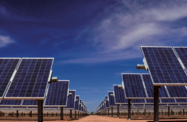Efforts to add more than 5000 MW of electricity generation capacity in Kenya – part of a push to improve electrification rates to 70% of households by 2017 – are leading to a jump in renewable projects, as well as cuts in end-user tariffs.
The Ministry of Energy and Petroleum (MoEP) is aiming to quadruple capacity to over 6700 MW by 2017, up from 1664 MW in 2013. However, with the 2017 deadline fast approaching and just 500 MW added to the grid to date, according to Kenya Power, the country is accelerating implementation to meet its targets.
Striking a balance
Expanding generation capacity for the 45m-person country has been a priority for the government in recent years, particularly as it looks to improve headline growth in secondary and tertiary sectors.
Given its historical lack of sizeable hydrocarbons reserves – something that may change in the future with recent discoveries of oil in the north of the country – renewable energy has traditionally played a central role in Kenya’s electricity mix, with hydropower previously accounting for over 80% of generation capacity. However, its share has declined to around 37.2% in recent years, according to MoEP figures, and is expected to continue falling, exacerbated by shifting climate and rainfall patterns. By 2017, hydropower is forecast to account for 26% of total capacity, one-quarter of which will be imported from neighbouring Ethiopia.
To avoid overexposure to a single type of generation, the country is looking to ensure that any new capacity is appropriately diversified. As a result, just 24 MW of the planned additional generation capacity is to come from hydropower, with the bulk of the supply stemming from two 960-MW coal plants, 1646 MW of geothermal capacity and 630 MW of wind projects, according to MoEP projections.
“Although we see renewables playing an extremely important role in the generation sector moving forward, we will not do away with traditional thermal plants, because a healthy power sector requires a balance between the two,” Albert Mugo, managing director and CEO of parastatal Kenya Electricity Generating Company (KenGen), told OBG. “It is essential to diversify our power sources, as it is simply not wise to be over-dependent on any one energy type. The country learned this lesson from its past reliance on hydropower.”
Private projects
While Kenya’s power supply has traditionally been provided by state-controlled enterprises, the private sector is expected to play a more central role going forward. KenGen, which is currently responsible for 80% of the country’s electricity generation, is slated to provide only 844 MW of the additional 5000 MW, with the rest to be channelled through independent power producers, Mugo told OBG.
Upgrades to transmission and distribution infrastructure are also central to the government’s plans, in part due to the level of leakage on the existing networks – a common problem in East Africa. Kenya Power, which remains the country’s sole electricity distributor for the time being, invested around KSh7bn ($68.5m) to replace and update existing infrastructure last year and is in the process of laying 200 dedicated lines to ensure steady power supply for industrial customers – 170 of which were complete as of July, Ben Chumo, the company’s CEO, told OBG. They also plan to build 98 new substations and refurbish 12 others by the end of next year, which should lend a greater degree of flexibility to the national grid.
Rethinking tariffs
Going hand-in-hand with the increase in supply is a decrease in tariffs, in part to improve household access and make the country more competitive in energy-intensive sectors like manufacturing. “The government is aware that Kenya’s competitiveness as an investment destination for energy-intensive industries is largely dependent on the cost of power,” Mugo told OBG.
These efforts are already yielding results, according to Chumo. Electricity prices for some end-users have fallen by up to 40% since 2013, he told OBG. In late June Kenya Power announced it would for the first time reduce tariffs across the board for households consuming between 51 and 1500 KWh per month. Some 48% of Kenyans currently have access to the electrical grid, although the MoEP aims to increase this to 70% by 2017.
The price cuts have been made possible by Kenya’s prioritisation of renewable energy sources, Chumo added, including the launch late last year of KenGen’s 280-MW Olkaria geothermal power plant, the largest facility of its kind in the world. “The savings have come principally as a result of the displacement of a number of diesel-powered plants, which are comparatively much more expensive to run than wind and geothermal plants,” he told OBG.

